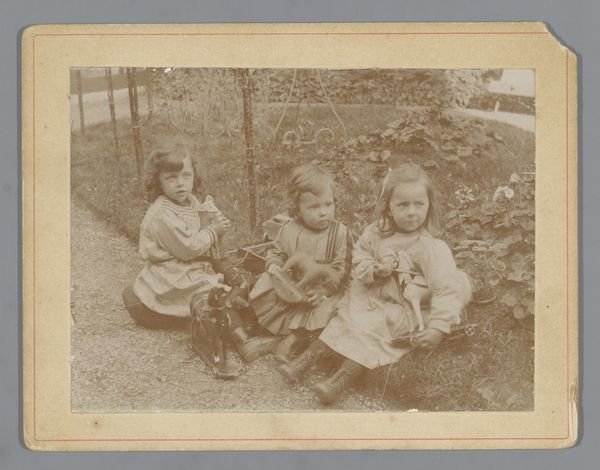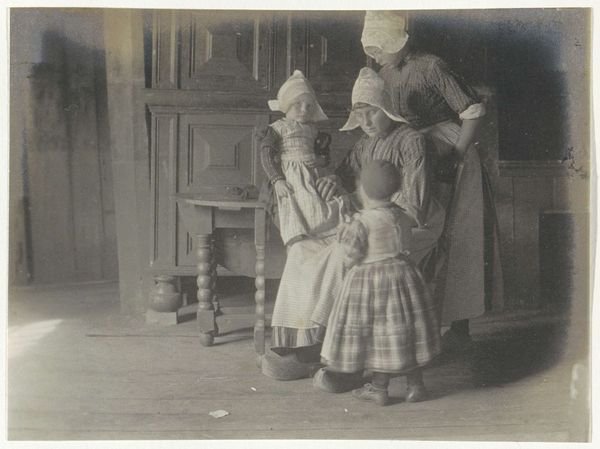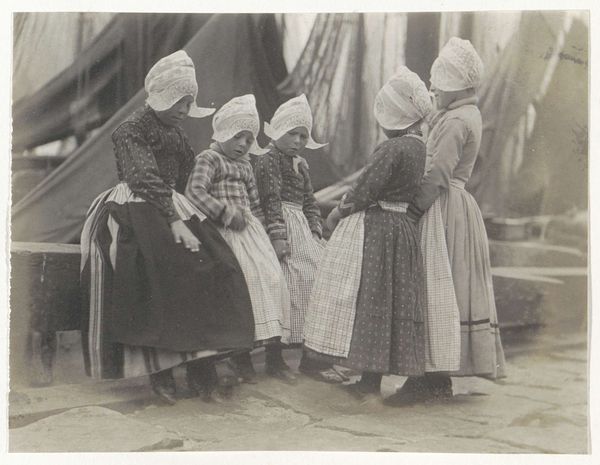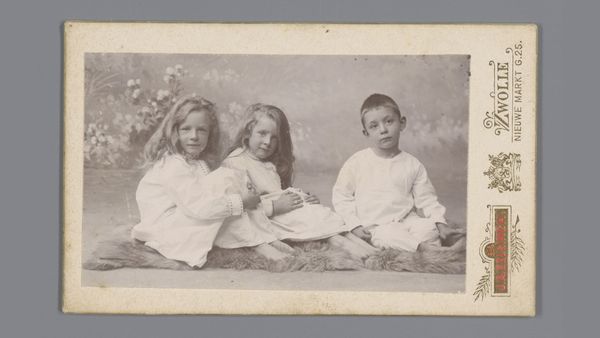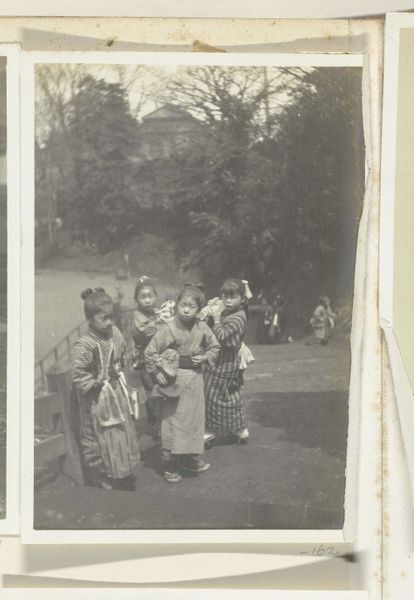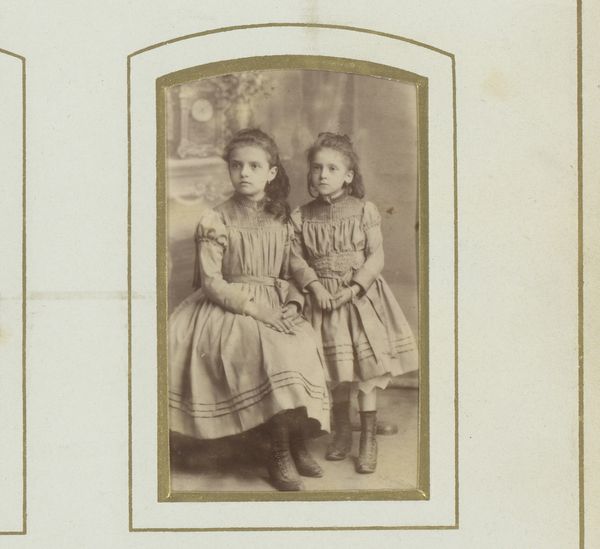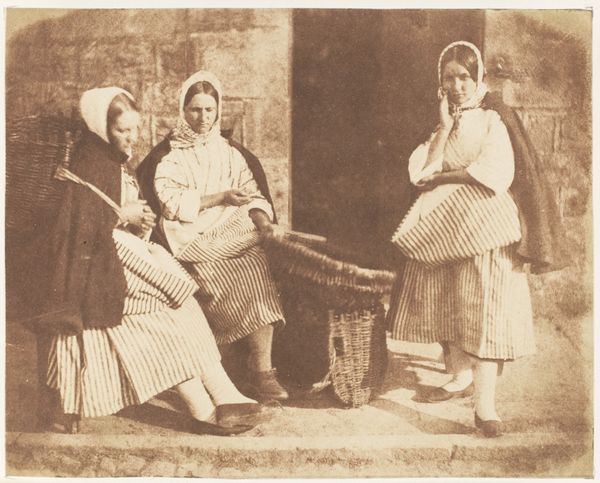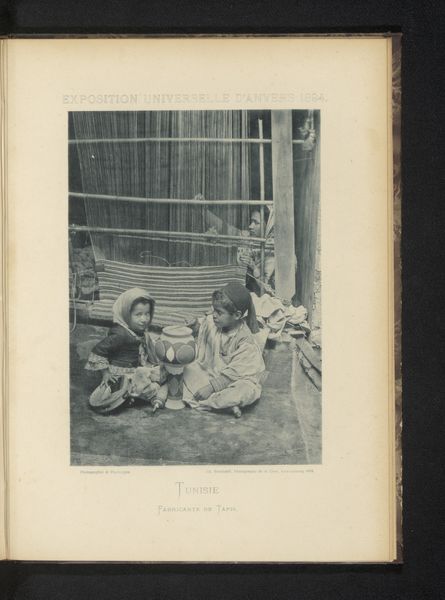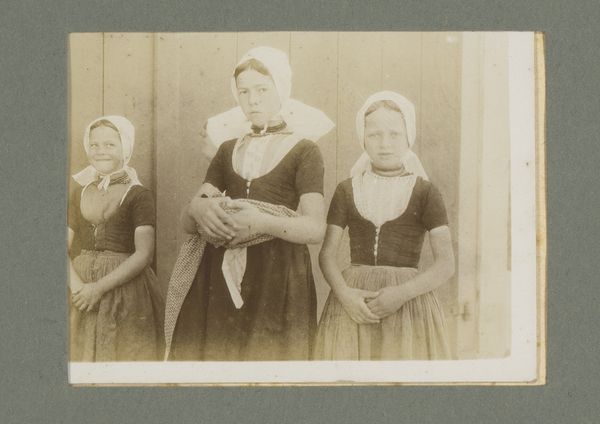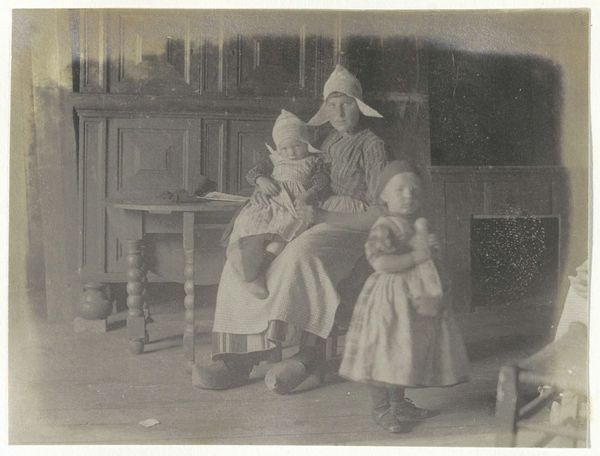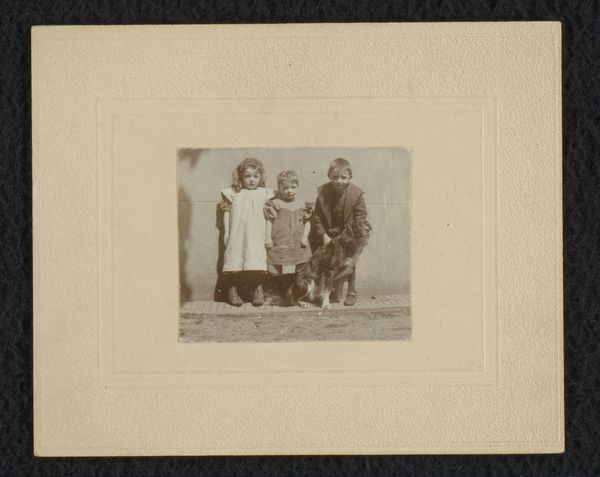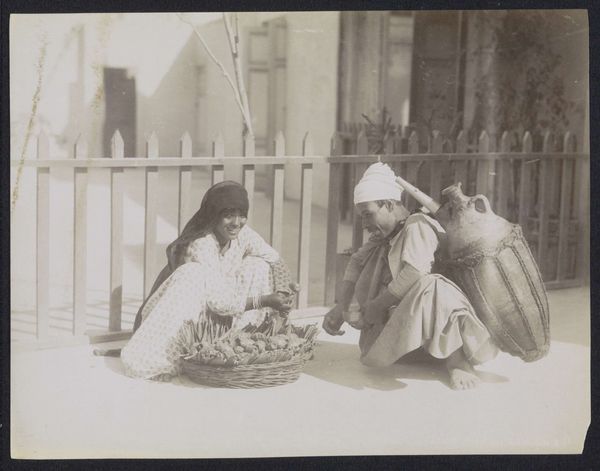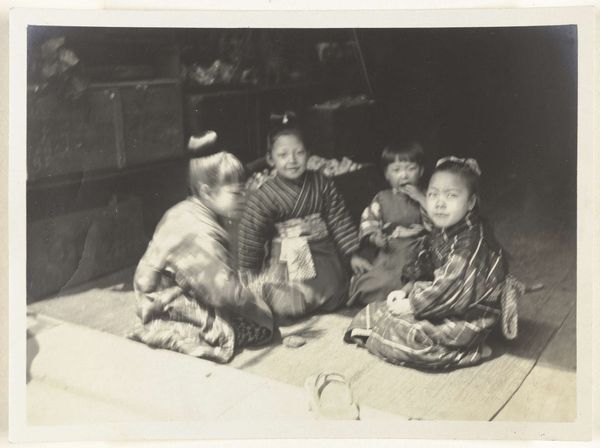
print, photography
#
portrait
#
pictorialism
# print
#
photography
#
historical photography
#
genre-painting
#
realism
Copyright: Rijks Museum: Open Domain
Editor: This is a print titled "Prentbriefkaart aan Willem Bogtman," created before 1926 by Richard Nicolaüs Roland Holst. It’s photography. What strikes me immediately is the sense of quiet domesticity, a snapshot of childhood in a bygone era. What do you see in this image? Curator: The cultural echoes resonating from this image are strong. We see three girls, likely from Zeeland given the text at the bottom, perhaps sitting for a genre scene. Their clothing, especially the headscarves, speaks volumes. In iconography, these head coverings often signified modesty, regional identity, and even marital status in some periods. But what story do *you* think the image tells? Editor: It feels almost staged, like a carefully arranged tableau vivant. The girls are positioned very deliberately. Are you saying the scarves may indicate identity or cultural values? Curator: Precisely. And note the dolls. They mirror the girls themselves, miniature versions, representing roles they were expected to fulfil. The photographic process itself elevates it. The sepia tones lend the scene a timeless quality, distancing the viewer, yet still capturing their humanity. We find cultural memory encoded in dress, objects, poses. How might that influence our modern reception? Editor: That’s a good question. The sepia tones and costumes give a historical feel, which is interesting. Curator: Indeed. It brings into sharp relief just how far society has changed. We, looking back at the piece today, almost feel a twinge of longing for this rural image despite it possibly not existing this way. This image reflects constructed values that continue to reverberate. Editor: So it’s a picture filled with both cultural meaning and an imagined history that speaks even louder today. Fascinating! Curator: Exactly. That's what great art often does, sparking interpretations far beyond their original context.
Comments
No comments
Be the first to comment and join the conversation on the ultimate creative platform.
